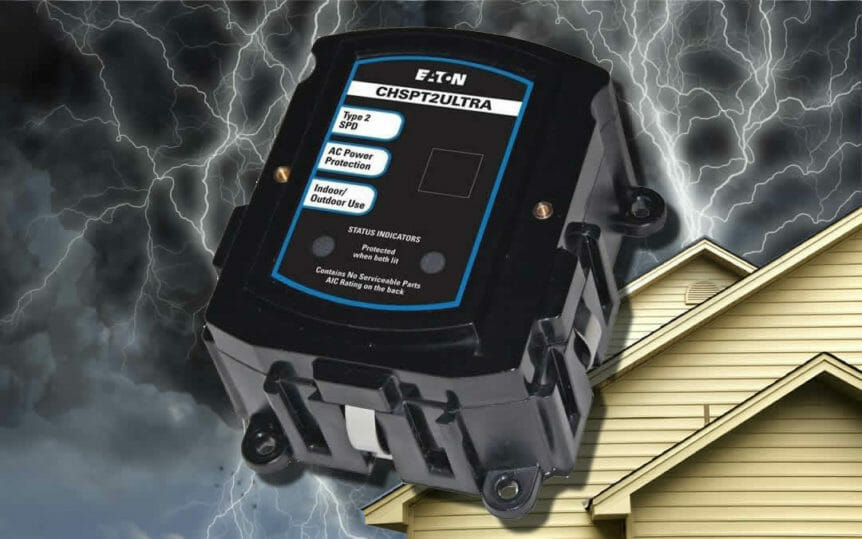
Protect Your Electrical System With A Whole House Surge Protector
The average family spends a great deal of time inside their home and also spends a great deal of money filling their home with items to keep them entertained, productive, and comfortable. Computers, televisions, sound systems, refrigerators, washing machines, cable boxes and modems are all high-ticket items that are essential for every household, which is why all homeowners should take the right steps to make sure these items are protected. And how do you keep them protected? It’s simple: surge protection.
Many homeowners believe that plugging their expensive items into a power strip is enough to protect them from unexpected power surges. But the fact is, most of the time a simple power strip doesn’t provide enough protection. And if your home doesn’t have protection, a lightning strike or a sudden surge of power can end up costing you thousands of dollars. By installing a whole house surge protector you are ensuring that your home and all your possessions inside it will remain safe.
“A whole house surge protector will prevent electrical surges from going through your home and destroying your belongings,” said John Moore ServicesElectrical Manager David Floyd. “Your home and your devices have a certain amount of ratings on outlets and receptacles, and based on that rating it can only handle so much voltage going through it at one time. If a power surge happens, your home will experience a momentary increase of voltage which can end up destroying anything electrical inside your home.”
How does it work?
Unlike surge protection outlets that protect only one receptacle, a whole house surge protector protects everything inside your home that is plugged into an outlet or connected to your electrical wiring. Because it protects your whole electrical system, it is located inside the main breaker panel. Its only function is to resist surges that unexpectedly come through the home. It creates a resistance to the surge by using insulators. As the surge travels through these insulators, it slows down before it reaches the devices inside your home.
“Imagine you are shooting a pumpkin with a rifle. You have a clear shot and hit the pumpkin dead on, and it splatters everywhere,” said Floyd. “But for your next shot there is a piece of plywood in front of the pumpkin, and when you shoot it this time the pumpkin splatters a little less. And for your last shot there are two pieces of plywood in front of the pumpkin, and when you shoot no damage is done to the pumpkin at all. The pumpkin was protected by the plywood, which was acting as a shield. Basically that is what a surge protector does: it shields all electrical wiring and receptacles from being damaged.”
Do all homes need protection?
Surge protection is recommended for all houses, no matter if yours was built 50 years ago or last week. It is impossible to know when an unexpected surge will hit your home, and if your house is protected then you don’t have to worry. While it is important for all homes to be protected, it is especially important for older houses.
Surge protection and grounding work hand-in-hand. Older homes are notorious for being equipped with outdated electrical wiring and having alternate paths to ground. Any time your wiring isn’t up to code or your home has more than one path to ground, you are extremely susceptible to damage from a power surge.
“When you have alternate paths to ground or an outdated breaker panel you are creating more heat in your electrical system,” said Floyd. “The more heat you have, the more likely you are to face serious damage if you are hit with a power surge. Many older homes are in need of an electrical re-wire or a panel upgrade, but those are big jobs. So if your home was built in the 70’s or earlier and upgrading your electrical system isn’t a possibility, I would highly recommend installing a whole house surge protector to keep your home protected.”
What happens if I don’t have protection and my house is hit by a surge?
Most power surges are caused by malfunctioning equipment or lightning. And if your home is hit, you will definitely hear it. Sometimes your lights may flicker or your power will go out completely, but that all depends on the severity of the surge. When the surge hits a circuit breaker that isn’t protected, it will fry it immediately and then travel through your electrical system. In seconds your TV, computer, and any appliances that are plugged in can be destroyed. And if the surge is powerful enough, fires can erupt inside your home through any device that is plugged into a receptacle.
A whole home surge protector, although a small device, can save your home from a great deal of damage. You work hard for your home and for the items inside, and the last thing you want is for them to be destroyed by an unexpected strike of lightning. If you don’t have surge protection for your home, give the expert electricians at John Moore Services a call. They will inspect your electrical system, give advice, and install a surge protector that could save your home from a potential fire.
